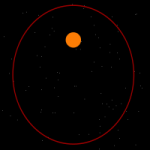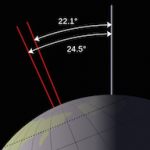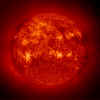There are many naturally occurring processes that influence the climate – causing it to either warm or cool.
These natural cycles have, in the past, resulted in regional and global climates that are very different than our climate today. These natural influences are still at work but have recently been overshadowed somewhat by the influences of human-produced greenhouse gases.
How do we know that recent changes are not caused by natural cycles? Here’s a 5-minute video explanation by the US National Research Council:
Milankovitch Cycles
The Milankovitch cycles relate to the effect that the Earth’s positioning with respect to the sun has on the Earth’s climate. (1)
There are three Milankovitch cycles:
We also take a look at changes in radiation from the sun
The Earth’s orbital patterns are always changing. This variation follows cyclical patterns that take thousands of years to repeat. The point the Earth is at in the cycle changes the distribution of solar radiation, and therefore, cooling or warming in different parts of the world.
The amount and distribution of solar energy that Earth has received (due the Earth’s natural orbital variations) is thought to be responsible for triggering major climate epochs in the past, such as ice ages.
Eccentricity (orbit)
The eccentricity is the change in the Earth’s orbit around the Sun. The path that the Earth takes around the Sun varies in its “circularity”.
The Earth’s path around the Sun is at times almost circular. It then slowly shifts to become more elliptical. And then back to circular. The period of this cycle is about 100,000 years.
The eccentricity is the ratio between the Earth’s greatest distance from the Sun and the Earth’s shortest distance from the Sun. A greater eccentricity is indicative of a more elliptical path around the Sun.
Obliquity (tilt)
The obliquity is the shift in the tilt of the Earth’s axis.
The tilt varies by just over 2°, with values ranging between approximately 22° and 24°. This change affects the amount of solar radiation received by the higher latitudes. the period of this cycle is about 40,000 years.
More tilt results in more solar radiation being received at higher latitudes during the summer, while less tilt results in less solar radiation being received at higher latitudes during the summer.
“Precession of the Equinoxes” (wobble)
“Precession of the Equinoxes” refers to changes in the Earth’s “wobble”, or changes in the position of the earth in its orbit around the sun at the moment of the equinoxes and solstices. The period of this cycle is about 15,000 years.
This changes the part of the planet tipped towards the Sun at different points of the earth’s eccentric orbit. This effects the amount of solar radiation received at that part of the planet. This in turn affects the climate in the region.
The Sun
 Although there are records of sunspot observations dating back hundreds of years, it has only been possible to instrumentally record changes in solar output since the late 1970s. This does not provide a long enough record to be able to identify any sort of trend. (2)
Although there are records of sunspot observations dating back hundreds of years, it has only been possible to instrumentally record changes in solar output since the late 1970s. This does not provide a long enough record to be able to identify any sort of trend. (2)
Based on the data that has been obtained thus far, we have observed that there is a cycle of increases and decreases in solar output that occurs, but its effect on warming is much less than the effect that can be attributed to greenhouse gases.








